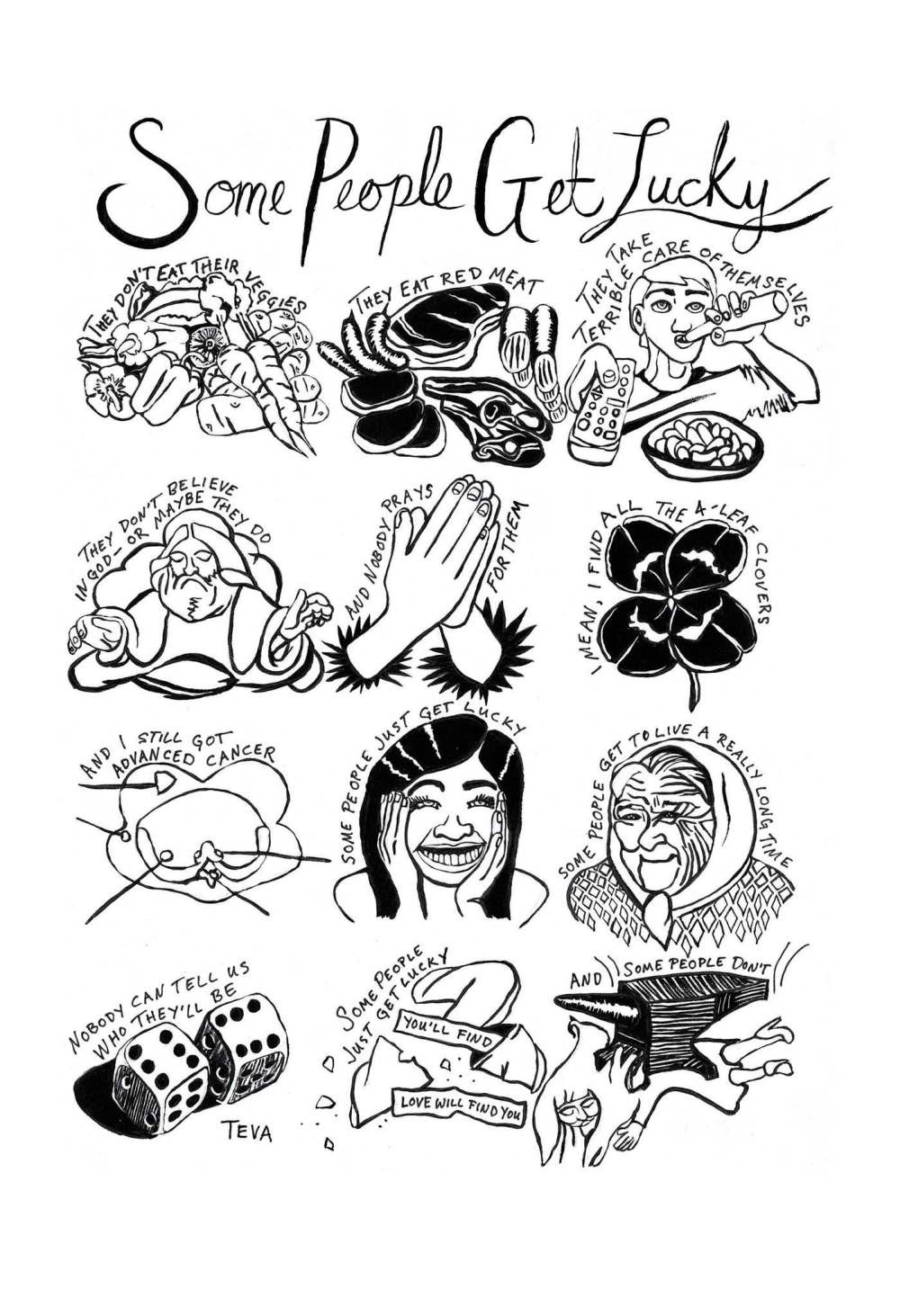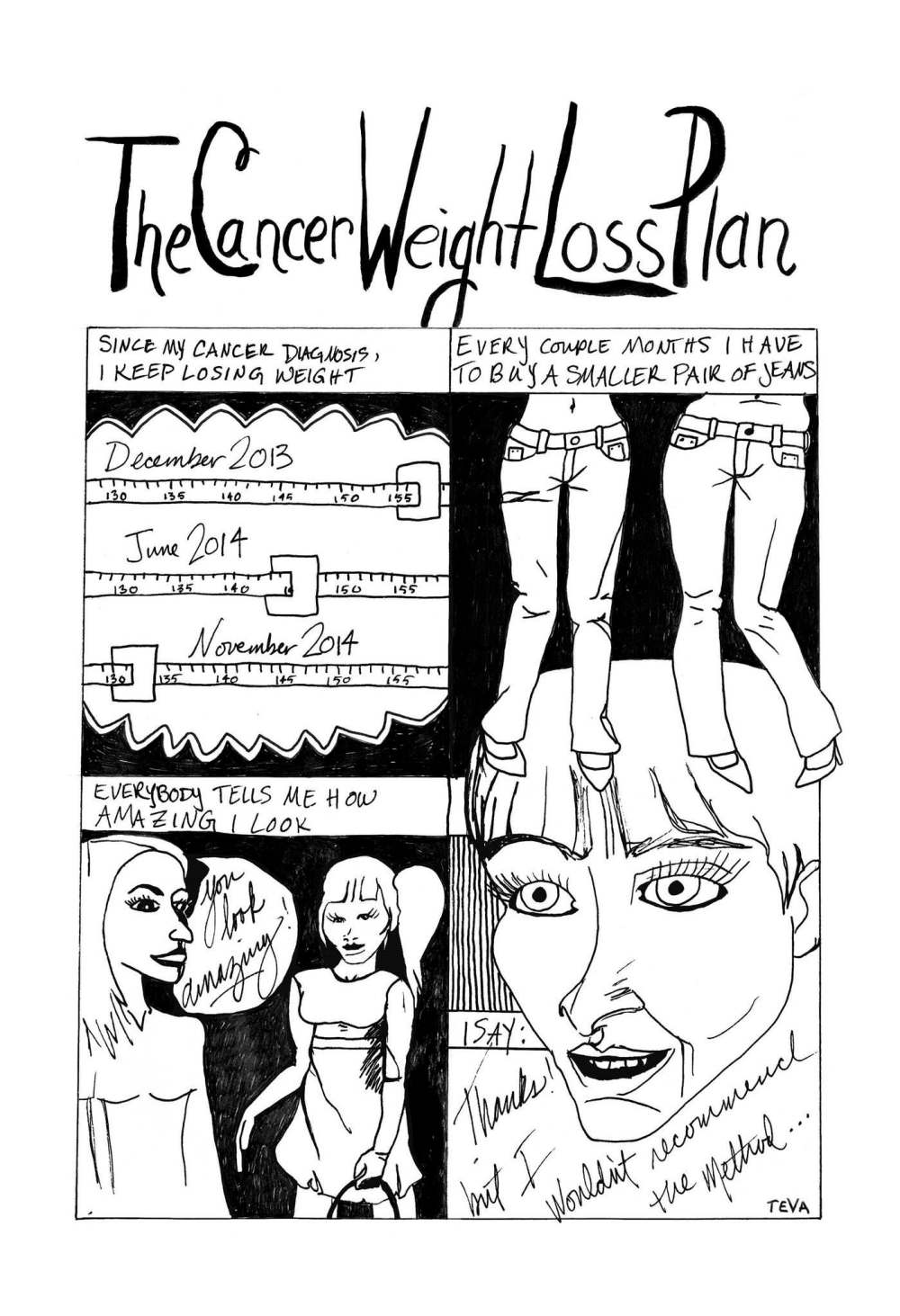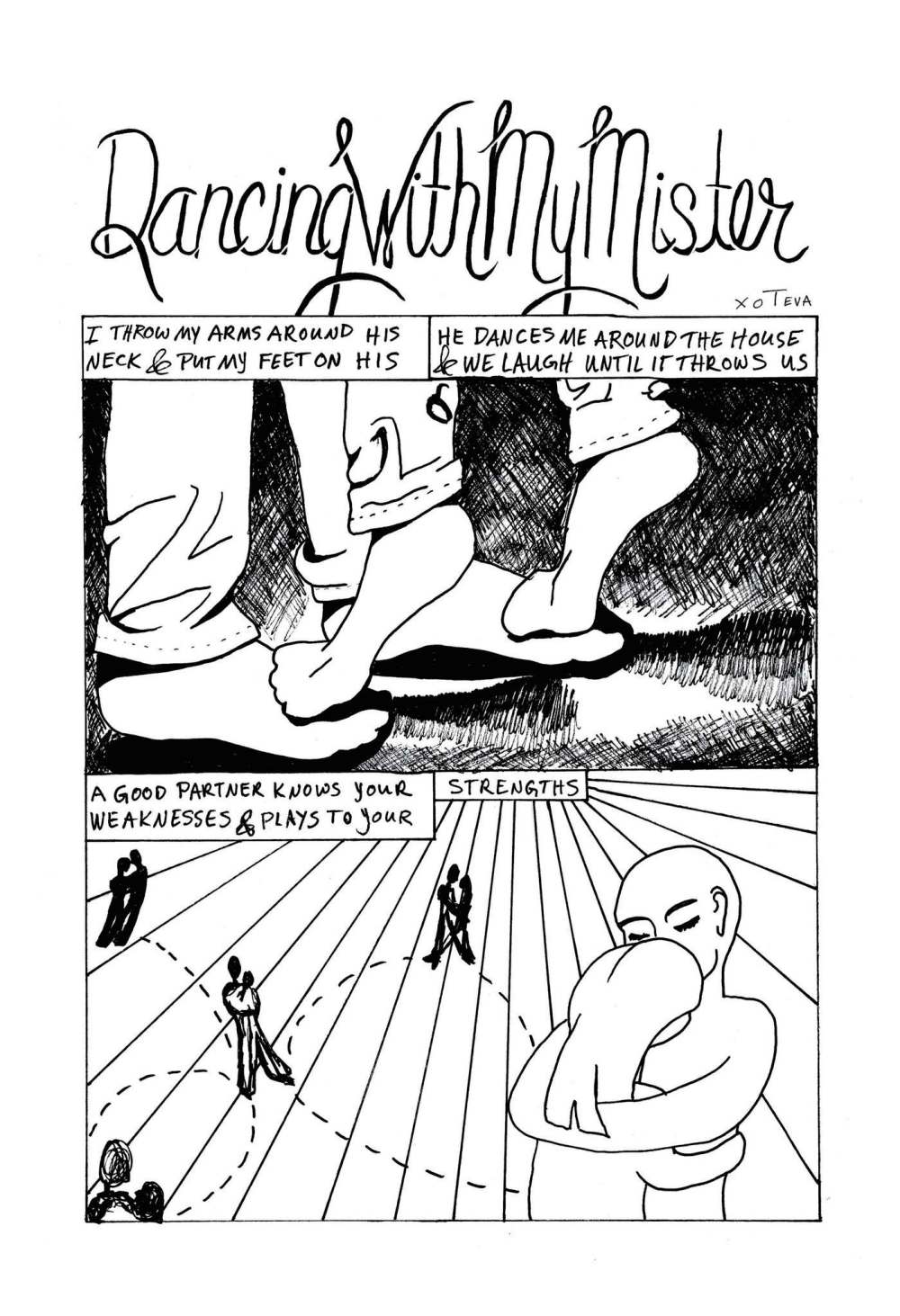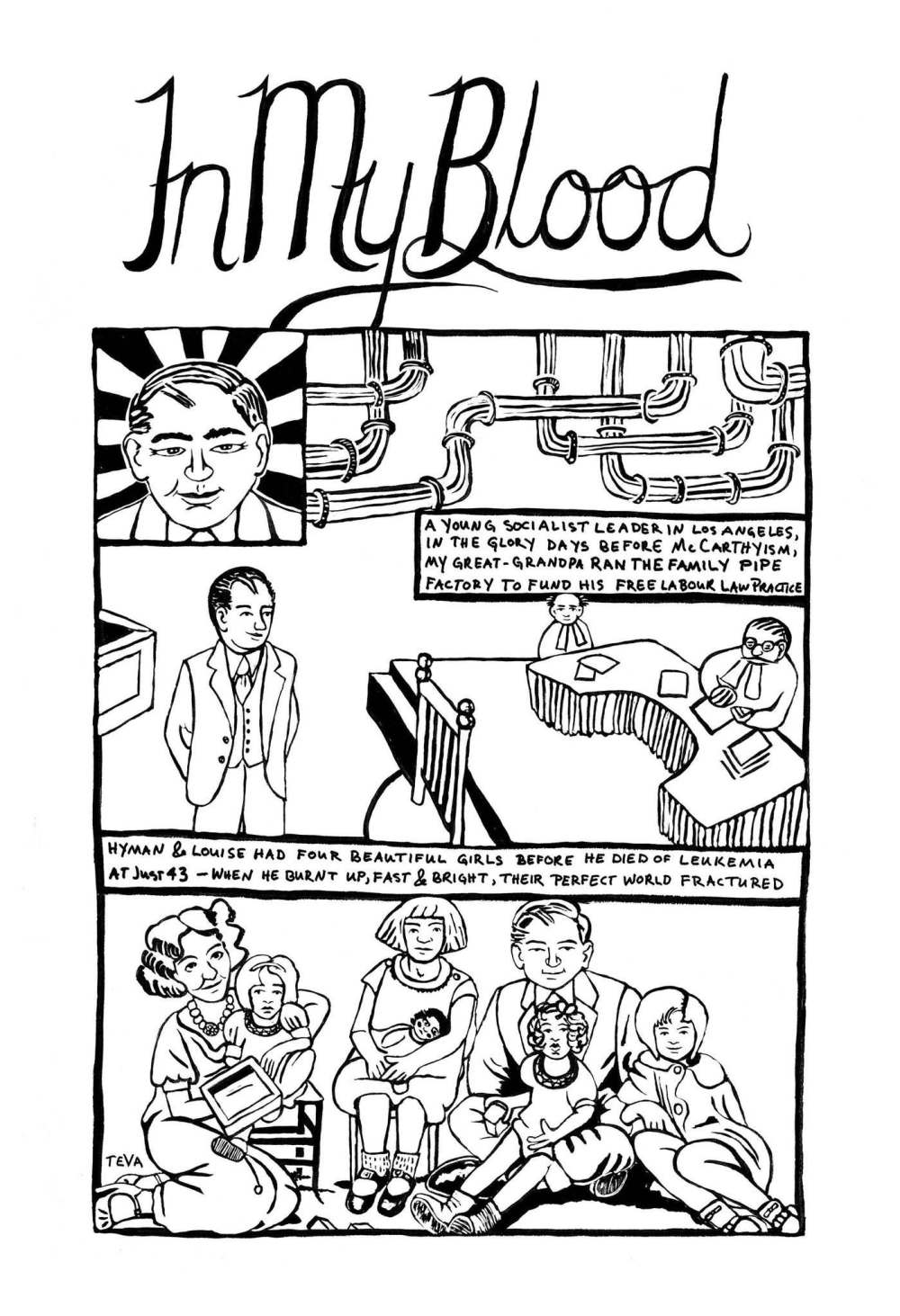Art of survival
Toronto artist's drawings – a coping mechanism for breast-cancer treatments – become WAG exhibition
Advertisement
Read this article for free:
or
Already have an account? Log in here »
To continue reading, please subscribe:
Monthly Digital Subscription
$1 per week for 24 weeks*
- Enjoy unlimited reading on winnipegfreepress.com
- Read the E-Edition, our digital replica newspaper
- Access News Break, our award-winning app
- Play interactive puzzles
*Billed as $4.00 plus GST every four weeks. After 24 weeks, price increases to the regular rate of $19.00 plus GST every four weeks. Offer available to new and qualified returning subscribers only. Cancel any time.
Monthly Digital Subscription
$4.75/week*
- Enjoy unlimited reading on winnipegfreepress.com
- Read the E-Edition, our digital replica newspaper
- Access News Break, our award-winning app
- Play interactive puzzles
*Billed as $19 plus GST every four weeks. Cancel any time.
To continue reading, please subscribe:
Add Free Press access to your Brandon Sun subscription for only an additional
$1 for the first 4 weeks*
*Your next subscription payment will increase by $1.00 and you will be charged $16.99 plus GST for four weeks. After four weeks, your payment will increase to $23.99 plus GST every four weeks.
Read unlimited articles for free today:
or
Already have an account? Log in here »
Hey there, time traveller!
This article was published 07/11/2017 (2910 days ago), so information in it may no longer be current.
Teva Harrison goes in for an MRI. It’s 3:45 a.m.; those machines whir and hum around the clock in Toronto. She’s sucked into the tube and when she opens her eyes, the eager, open face of Dora the Explorer grins at her from the too-close ceiling of the device. She imagines how terrible it would be to be a child in an MRI. Then she smiles at the thought of someone awkwardly reaching into the machine to put up stickers, just to make it a little less scary.
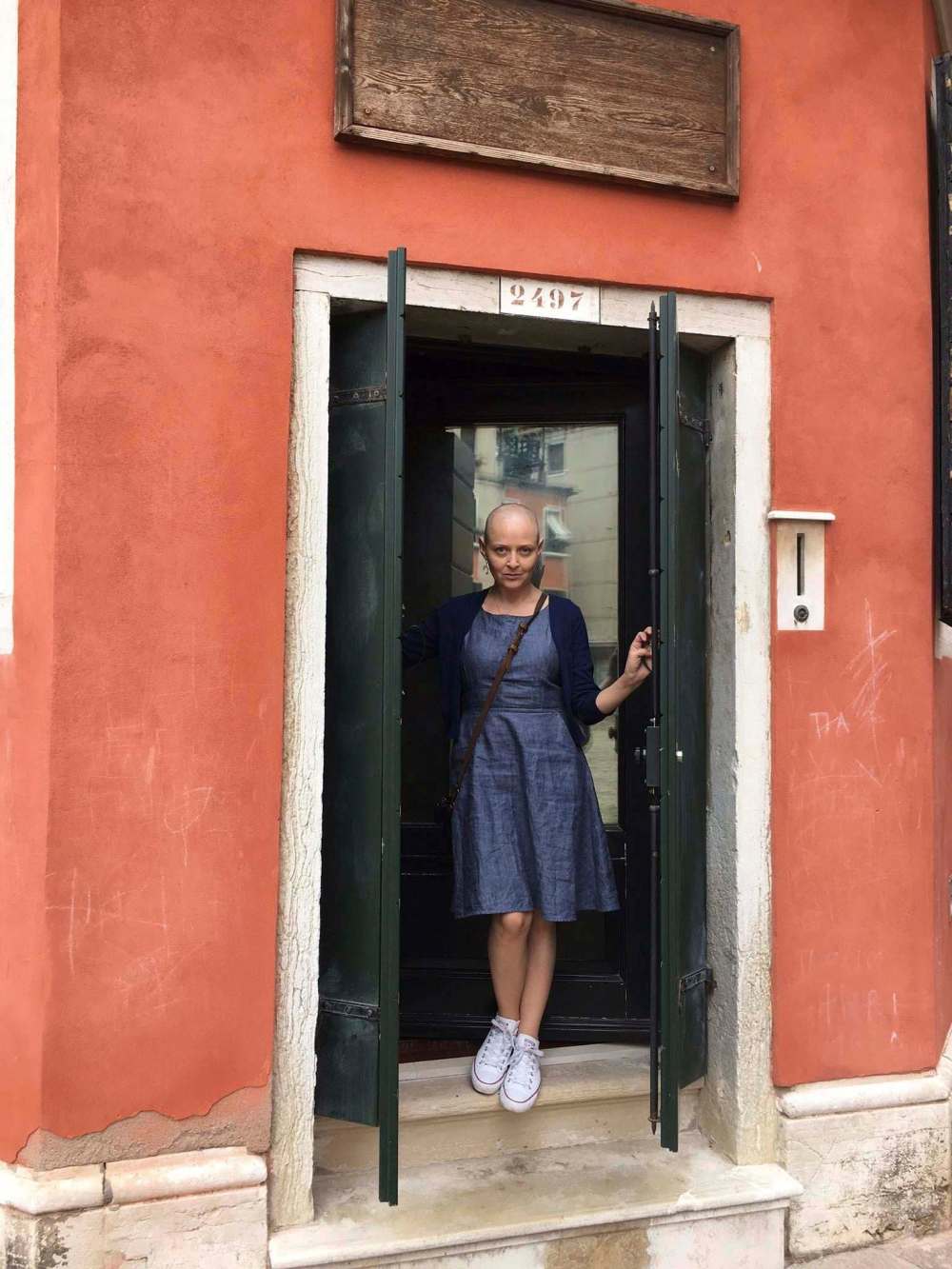
That scene is from Harrison’s 2016 graphic memoir In-Between Days: A Memoir About Living With Cancer. At 37, she was diagnosed with advanced metastatic breast cancer. Harrison is an artist, so, in order to process what’s happening in her body — and all the messy, complicated feelings that come with finding out you are going to die — she put ink to paper. Those drawings became a critically acclaimed book.
Now 41, Harrison is still living with cancer. She saw the publication of In-Between Days, which was shortlisted for the Governor General’s Literary Award for Non-Fiction. Then she saw her 40th birthday. And this weekend, she will see her first exhibition open at the Winnipeg Art Gallery.
Curated by WAG director and CEO Stephen Borys, In-Between Days, which opens Saturday and runs until Jan. 13, features 40 ink-on-paper illustrations from the book. This will be first time Harrison’s work has been exhibited in an art gallery this size.

“Oh man. It’s pretty amazing,” she says from Toronto. Harrison has one of those mellifluous voices and she’s just as sparkling over the phone as she is on the page. “I’ve had artwork in small galleries in the past, but never anything even somewhat comparing to the WAG.”
She and her husband David were visiting the gallery when they were in Winnipeg. David knows Borys and wanted to say hello. “He asked me if the work had ever been shown,” she recalls. “He said to me, ‘One of the things that matters to me with the WAG is being a place within the community that can encourage important conversations.’ He saw showing my work as a way to encourage important conversations. And I’m just so excited, both because of the work — it’s very exciting to me as an artist — and because I really look for ways to encourage conversations around metastatic breast cancer anywhere I can.”
Since the book’s release, Harrison has had plenty of occasion to do exactly that. It’s not hard to understand why In-Between Days has resonated with so many people; it’s a gorgeous memoir, unflinching in both its honesty and its hopefulness. Through short comics and text, Harrison delves into difficult subjects: how atheism sits at odds with having Stage IV cancer, the loss of her independence, the scaling back of her dreams.
The thoughts that kept her awake at night, and the pain that can’t always be seen.
The book is also often darkly funny, such as this exchange from a section on small talk. Q: “So what do you do?” A: “I have cancer. Mostly, I do that.”
“It’s just been like a gift to me,” she says of the response to the book. “I started making these drawings as a way of coping, myself. Through an iterative process of reaching a wider and wider audience, I’ve found myself in dialogue with people — mostly people living with cancer who have had an earlier-stage cancer or have a family member with cancer, but not exclusively. I’ve had people reach out to me living with chronic pain or another disease that has been rendered chronic or terminal. Depression is another thing, because the things I talk about in the book, about finding yourself in a really dark place and the finding a way to move forward with joy, it’s actually universal, right?”
Refreshingly, Harrison does not adopt the tone of a cancer cheerleader, waving fistfuls of pink ribbons like pompoms. Rather, it’s her willingness to get real — and to be vulnerable — that makes her work so relatable. Living with cancer is not easy, “and no amount of pink swaddling is going to make it so,” she says.
“It’s a thing that challenges you. You have to look into yourself and say, ‘What am I capable of?’ Part of that means wringing the most out of each day — but part of that also means being permissive with ourselves and say, ‘I need to rest today. And that’s OK.’ That’s also part of living my best life.” Self-compassion, she says, is something she’s still learning.
Although Harrison’s work has become public, it was, for a time, exceedingly private. For almost a whole year, no one outside of Harrison’s intimate circle knew she was sick. “I went through a lot of emotional work to get to a point where I was even making these drawings, where I was dealing with the really dark, painful emotions that came from having a terminal illness and trying to figure out: what is my life now? I was working through my own emotions by making these little one-page stories.”
She shared her drawings with friends who were also grappling with metastatic breast cancer diagnoses, and they insisted that she share them. She started a blog, and it wasn’t long before her drawings were picked up by The Walrus magazine. And then House of Anansi Press contacted her, saying she had the beginnings of a book.
“It all happened really fast. It was my first book. It was my first time drawing comics. It was my first time having cancer,” she says, laughing. Harrison was told in the initial meeting with her publisher that a book would take two to three years. “I said, ‘Funny thing, the median survival for my cancer is two to three years. Can we speed that up at all?’”
Eleven months after that first meeting, Harrison was holding a finished copy of In-Between Days in her hands. And the months since her diagnosis have turned into years. Harrison is still living with cancer, but she’s still living. She’s working on a bunch of new projects — including two more books, one comic, one prose. Playwright Jordan Tannahill also tapped her to be the principal illustrator for Draw Me Close, a virtual-reality project co-produced by the National Film Board and the National Theatre in London that premièred at the Tribeca Film Festival in New York.
As for her health, she says she feels good right now. A new biopsy revealed that the course of her disease had changed, and her treatment now involves chemo — and losing her hair — which is a change from the book.
“I feel like I’ve been given this gift of potential,” she says. “Maybe I’ll get a number of more years out of this treatment, and maybe by then they’ll have figured out another way to extend life by the time I need it. I have more time.”
Harrison has what she calls realistic hope.
“I’m not letting myself hope that, ‘Oh, tomorrow my cancer will be cured,’” she says. “My hope is that they’ll find some way to render it chronic. That they can stop it where it is. Where it is is not great, but it’s workable.
“And I really love living,” she adds with a laugh. “It’s the best.”
Teva Harrison will be at the Winnipeg Art Gallery for an artist talk Sunday at 2 p.m.
jen.zoratti@freepress.mb.caTwitter: @JenZoratti

Jen Zoratti is a columnist and feature writer working in the Arts & Life department, as well as the author of the weekly newsletter NEXT. A National Newspaper Award finalist for arts and entertainment writing, Jen is a graduate of the Creative Communications program at RRC Polytech and was a music writer before joining the Free Press in 2013. Read more about Jen.
Every piece of reporting Jen produces is reviewed by an editing team before it is posted online or published in print – part of the Free Press‘s tradition, since 1872, of producing reliable independent journalism. Read more about Free Press’s history and mandate, and learn how our newsroom operates.
Our newsroom depends on a growing audience of readers to power our journalism. If you are not a paid reader, please consider becoming a subscriber.
Our newsroom depends on its audience of readers to power our journalism. Thank you for your support.


